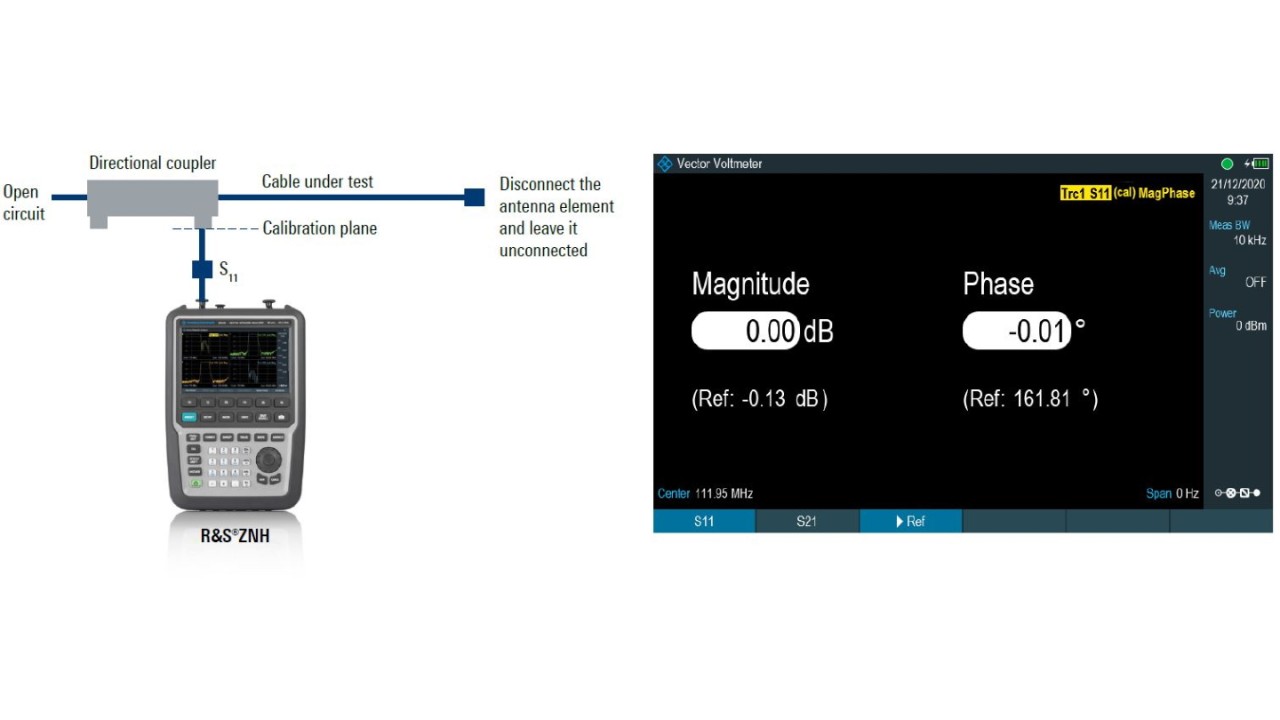Application
Alignment of ILS antenna arrays can be performed using an R&S®ZNH with the R&S®ZNH‑K45 vector voltmeter option. Depending on the required application, a 1-port or 2-port setup should be used.
1-port setup
This setup is typically used to inspect the electrical length of the cables installed in the antenna array. Each cable in the corresponding element path must have equivalent electrical length. Any misalignment will result in a deviation of the generated beam from the desired angle. Engineers utilize such a setup when making maintenance checks since minimum disruption to the system is required. Perform a full 1-port calibration with the R&S®ZNH. For this, connect a calibration device to the directional coupler at the cable end (calibration plane). Disconnect the cable under test from the first antenna element and make an S11 reflection measurement to determine the cable’s magnitude and phase (see Fig. 1). When results are within specifications, set the measured values as reference values using the “►Ref” button. The normalized values for the magnitude and phase close to zero are displayed. Repeat the S11 measurement for the remaining cables. For the second and all subsequent cables, the relative magnitude and phase against the reference values are measured. Check if the measured values are within the desired tolerance.








